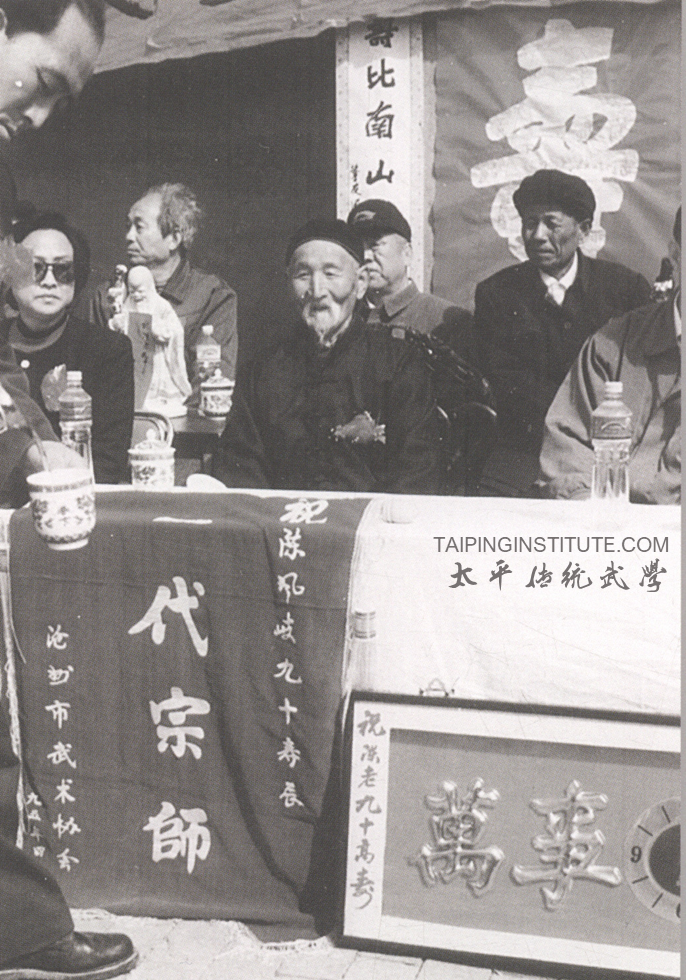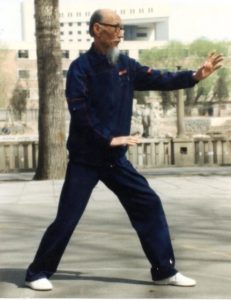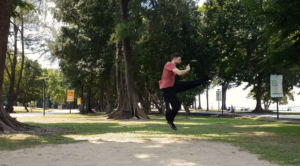Yanqing Men 燕青門 is one of the greatest systems of Northern Chinese Martial Arts. Unfortunately due to its difficulty in training, the bravery of its practitioners (many died in battle as they would join local militia, resistant and military forces) and the development of modern distractions, the methods of Yanqing Men continue to become extinct. Traditional Yanqing Men (also known as Mizongquan 迷踪拳/秘踪拳 amongst other names) is composite system that was propagated in the Cangzhou and Tianjin greater areas of Hebei Province. Amongst the 20 or so methods (consisting of 50 or so empty hand forms) within its repertoire. After the important Yanqing Jiazi foundation there are Mizong Quan, Lianshou Quan and Yanqing Quan which are the great three principal boxing arsenal within Yanqing Men. Many of the other methods are either from other styles absorbed into Yanqing Men or specific synthesis of techniques. Whilst Lianshou Quan focuses on deceptive interlinked hand techniques, Mizongquan of varying changes of angles and directions, it is Yanqing Quan which focuses on the integration of footwork, hands and legs where it seems like the techniques unfold one onto another like a rolling avalanche. Today only one or two sets of Yanqing Quan sets remain in Cangzhou. We have been fortunate enough to inherit the five sets of Yanqing Quan completely and shall introduce some of the interesting features of this boxing style. Each set of Yanqing Quan boxing consists over 50-70 techniques each.
Yanqing Quan is said to take on the spirit of two key animals being the ferocious tiger and the speed of Leopard. In actuality there are five inspirations which include the Tiger, Leopard, Eagle, Swallow and Ape within its methods. Tiger emphasizes power, the Leopard speed, the Eagle precision and accuracy, the swallow lightness and the ape agility. Some of the principles and techniques of the first three sets are introduced below:
The first set of Yanqing Quan emphasizes the principles of : (1) Strike whilst you are moving, (2) The end of one technique is the beginning of another, (3) Strike through decisively, intercept and deflect whilst attacking harmoniously, (4) Near an opponent rapidly, exit danger intelligently. Some of the techniques include White Crane opens its wings which is a very skillful method of displacement so that when the opponent is attempting to initiate certain attacks, they are nullified and entered into by a forceful close body strike. La Gong is a way of guiding an incoming strike leading it into control whilst the other hand is open to attack after disarraying the opponent. Fierce Tiger rolls his strikes is one of the important skills where a straight strike, back fist, hammering and smashing fist are combined into a ferocious series of attacks. It is this specific series of movements that gives the Tiger spirit to this first set of Yanqing Quan. A further feature is known as feign to the right enter to the left, act down attack upwards, move backward attack to the front, displace the guard attack the centre and remove all targets. This is supported by some of the skilled stepping of Yanqing Quan.
The second set of Yanqing Quan suggests principles such as : (1) Turning is a deception of risk, when done with speed it becomes a weapon. (2) When an attack cannot penetrate fold it, change it and commence again seamlessly (3) Destroying a limb is a way to achieve success without being stuck on the torso (4) To deflect ever so slightly is to allow a technique to be faster. Essentially the techniques of this set allow the use of smart and very fast techniques. The element of folding is how when an attack to the opponent is deflected or blocked somewhat the folding creates a new attack with little movement, only a slight adjustment which normally catches the opponent by surprise, this does not occur once but continuously. The destruction of a limb occurs because when folding it catches objects and it is designed to break the limb whilst in motion and continue on striking. Also many of the techniques are a direct limb break.
The third set of Yanqing Quan applies the principles of : (1) The legs are essential to supporting upper body attacks, the hands are essential to supporting lower body attacks including kicks and knees (2) open to the sides and thread through the middle, seek the centre and destroy from behind (3) When striking ensure to follow with a close/lean attack (4) Should your close in tactics fail then conduct the throw and follow up with ongoing strikes. Techniques in the third start to become a little more intricate as they utilize all parts of the body. Here the hands are unleashed whilst legs follow through as the legs create space the body then closes in and then the hands, elbows, shoulders or head strike, should they be intercepted then the body applies its motion into a throw. Most of the techniques are designed in bursts like an eagle capturing its prey, the techniques keep seeking until that opportunity arises and destroys the opponent in one quick swoop. There are a number of specialized stepping methods introduced as well which allow the rolling techniques to thread with more angles and depth of entry options.
The fourth and fifth set add greater agility and methods of reacting very quickly. The Yanqingquan sets therefore emphasize continuous power, speed, precision, lightness and agility.
Yanginq Men’s Yanqing Quan is one of the essence of the old Yanqing Quan as passed down through Chen Shan. These were closely guarded because they were very effective so that during conservative times when skills were important they became seldom passed on. This resulted in the unfortunate situation today where there are hardly any practitioners of all the methods remaining. When M Chen passed away, he explained that these methods alongside the 8 lianshou quan and 6 mizong quan should never be taught to outsiders completely. We have to kept to his wishes but also concerned about the potential loss these combat skills and wonderful heritage.




